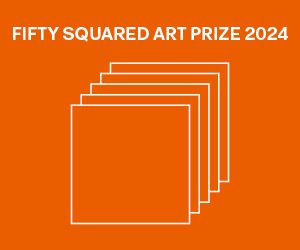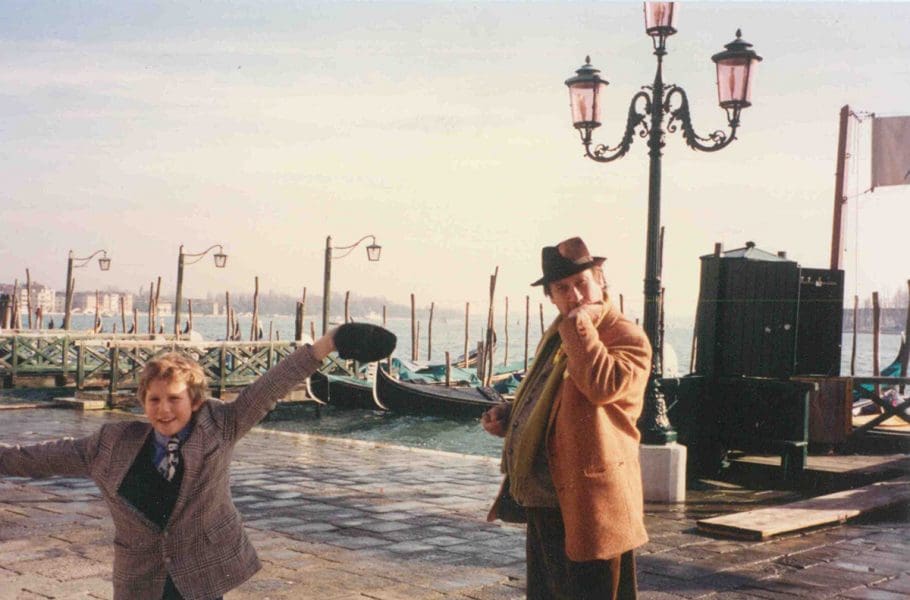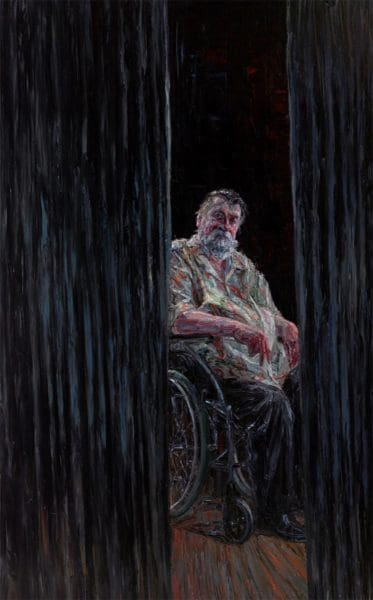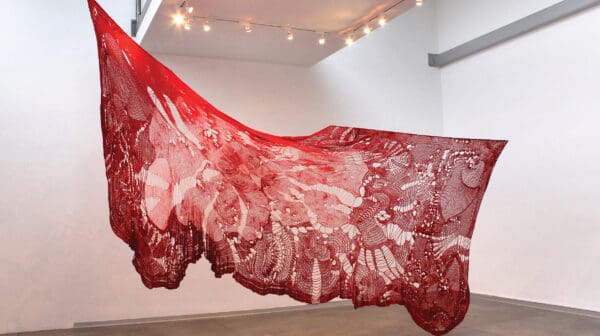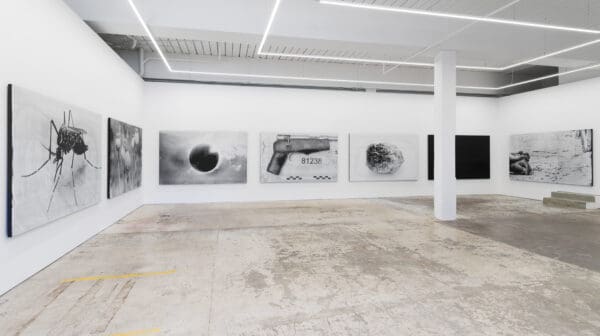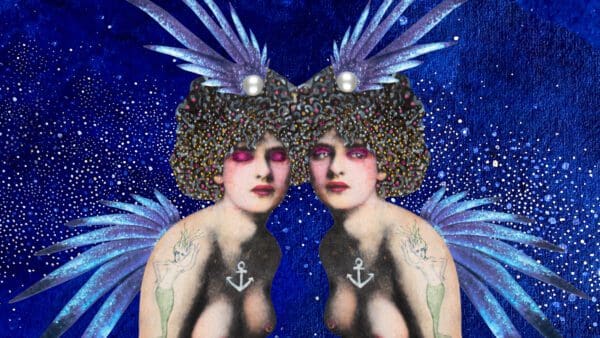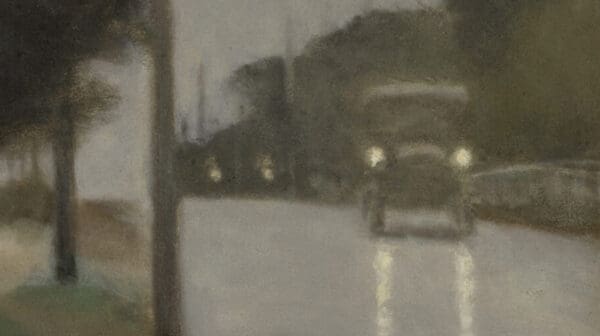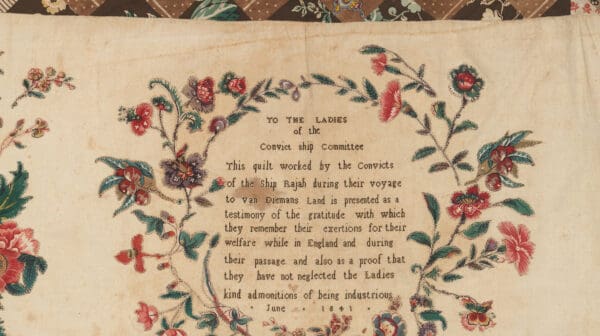In the summer of 1993, the road from Goroka in the Eastern Highlands of Papua Guinea was “rife with rascals,” recalls Evan Hughes, then aged eight and seated in the back of a flat bed ute alongside his father, the late Queensland-born Sydney art dealer Ray Hughes.
Arriving in a small village, his father haggled over the price of a metal shield made from a car bonnet which reminded him of a constructivist painting. Hughes senior had almost closed the deal with a young tribesman wearing an Australian Rugby League shirt, when the youth’s father killed the sale. “We need the metal ones for fighting,” the elder said. “They use bullets now.”
Family life was filled with such colourful travels buying art, recalled Evan Hughes, 32, before a packed room at the public memorial service at the Art Gallery of New South Wales (AGNSW) for his father Ray, who died of respiratory failure on 7 December, aged 71.
Dressed in a dark suit with red tie, the junior Hughes’s purple velvet shoes seemed a nod to his late father’s idiosyncratic sartorial style.
Ray Hughes was a legend of the Sydney art world with his loud ties, an assortment of hats, and a penchant for corduroy, as well as the services of a Beijing suit tailor of dubious taste.
A few years after the New Guinea trip, Evan and Ray Hughes were together outside the city of Cotonou, on the south coast of Benin in West Africa. Evan understood more French than his dad, and translated one tribesman saying to another that the Australian art dealer had haggled the price for tribal art down to about one-sixth of its value.
Ray quietly instructed his son, “Start walking very slowly to the car.” The AGNSW room erupted with laughter as Evan impersonated his father’s voice, then explained, “By the time we got to the parking lot, the boot had 12 Gẹlẹdẹ masks in it, and we paid exactly what Dad offered.”
Evan Hughes announced part of his father’s collection of Chinese, African and Australian art would be gifted to the Art Gallery of New South Wales. During the memorial, a lion coffin designed in 1995 by a Ghanaian carpenter for the burial of a local chief, and purchased by Hughes two years later, was placed on display, “Proving my Dad’s adage, ‘What, does a guy have to f—–‘ die to get something hung here?’”
Ray Hughes made the careers of many Australian artists, as well as being a champion of Asian art in Australia. He is remembered for the art of the deal. Hughes was known to proffer an old magazine profile of himself stating he didn’t do discounts when customers attempted retail haggling. A bon vivant, guests were expected to bring their smartest game and curiosity to Hughes’s famous Thursday lunches upstairs in his Surry Hills studio.
Artist Lucy Culliton told Art Guide Australia, “Ray was very important because he set me up for life. I was straight out of art school and he put me on the map. But if someone didn’t know him, I’d have said be cautious of him because he was a scary man who didn’t do dumb. If you asked a silly question, you’d be in trouble.”
“Ray’s support in my mid-twenties changed everything for me,” added artist Del Kathryn Barton. “He helped me strip my work back to reveal its most truthful inner core.” Hughes was a “a complex, beautiful, big soul. His formidable personality was always underpinned by the most palpable passion for the art he believed in. Once you were showing with him you were, quite simply, family”.
Geoffrey Cassidy, Mossgreen’s Sydney-based director of paintings, wore a brown corduroy suit to the memorial as an ode to Hughes, who chose the suit’s lining. “Reading the tributes to Ray, a lot of words do come up: larger than life, visionary, one-of-a-kind, to which I add joyous, curious, mischievous, demanding, incisive and generous to a fault,” said Cassidy.
“It was a life lived very, very large: large in ambition, large in achievement. It was full of passion, adventure, big ideas, lasting friendships and the odd glorious feud. To know Ray was not necessarily to love him,” Cassidy explained, “but even those who didn’t necessarily like Ray respected him, his achievements, his fearless and uncompromising nature and his absolutely extraordinary eye, the likes of which will rarely be seen again.”
The director of the AGNSW, Michael Brand, said the last time Hughes had attended the gallery was to see the Archibald prize exhibition in late July.
“Any of you who were there will recall him looking absolutely resplendent in an apricot jacket with a matching cap. He sat in a wheelchair, looking at his portrait painted by Jun Chen as a finalist.” Brand said the portrait had a “sombre poignancy” depicting Hughes in his wheelchair, between curtains.
Artist Joe Furlonger recalled that when he and Hughes would go to see a big art show together, “the sort of paintings that attracted him weren’t the classic, tick-all-the-boxes, this is a beauty ones. He often chose the most unusual combination of things that an artist had thrown together.”
“His continual pushing, which we as artists would have at times resented like brothers and sisters in a family, all the elbowing and shoving; his constant prodding to try something in one of those impossible combinations was, in the long run, good for a lot of us,” Furlonger said.
Artist Gary James, aka Spook, winding his way through the memorial crowd snapping photos with a small camera, said, “He either loved you or hated you. Once you were taken into his camp, there was only one exit: out the door in a punch fight.” James burst with laughter. “He could be good, and bad. It’s true: he could be an arsehole, or an angel.”
Painter and printmaker Bruce Latimer recalled, “He was an enthusiast, and that’s irresistible. You loved him and you hated him. He could be a total prick, and the most wonderful person on Earth.” Latimer says that when he parted company with Hughes, the dealer told the artist his work was “too intellectual,” which was “either the ultimate insult or the opposite.”
A former Australian diplomat to China, Geoff Raby, told the memorial his common interest with Hughes was contemporary Chinese art, later supplemented by a shared love of wine, long lunches and dinners, politics, the Sydney Swans, and travel to remote places in China.
“In the late 1990s and early 2000s, Ray pioneered the introduction of contemporary Chinese art into Australia,” said Raby. “He was fearless in taste and pushing boundaries. He loved the quirky, naughty, humorous, disturbing and dark things in his painters.”
Raby shared the details of the items Evan Hughes placed in his father’s coffin: a pen for the crossword, his passport, $100 to “pick up a bottle of duty free on the way” and ¥1000. Lying in state, Hughes was resplendent in his best Chinese tailored suit, his doctoral robes, and his son’s Swans scarf.


